- Home
- Roald Dahl
The Missing Golden Ticket and Other Splendiferous Secrets
The Missing Golden Ticket and Other Splendiferous Secrets Read online
What is
Spotty Powder anyway?!
“Spotty Powder!” exclaimed Mr. Wonka, beaming at the company. “There it is! That’s it! Fantastic stuff!”
“It looks like sugar,” said Miranda Piker.
“It’s meant to look like sugar,” Mr. Wonka said. “And it tastes like sugar. But it isn’t sugar. Oh, dear me, no.”
“Then what is it?” asked Miranda Piker, speaking rather rudely.
“That door over there,” said Mr. Wonka, turning away from Miranda and pointing to a small red door at the far end of the room, “leads directly down to the machine that makes the powder. Twice a day, I go down there myself to feed it. But I’m the only one. Nobody ever comes with me.”
They all stared at the little door on which it said MOST SECRET—KEEP OUT.
Puffin Books by Roald Dahl
The BFG
Boy: Tales of Childhood
Charlie and the Chocolate Factory
Charlie and the Great Glass Elevator
Danny the Champion of the World
Dirty Beasts
The Enormous Crocodile
Esio Trot
Fantastic Mr. Fox
George’s Marvelous Medicine
The Giraffe and the Pelly and Me
Going Solo
James and the Giant Peach
The Magic Finger
Matilda
The Minpins
The Missing Golden Ticket and Other Splendiferous Secrets
Roald Dahl’s Revolting Rhymes
The Twits
The Vicar of Nibbleswicke
The Witches
The Wonderful Story of Henry Sugar
ROALD
DAHL
The MISSING GOLDEN
Ticket
AND OTHER SPLENDIFEROUS SECRETS
ILLUSTRATED BY QUENTIN BLAKE
PUFFIN BOOKS
An Imprint of Penguin Group (USA) Inc.
Find out more about Roald Dahl by visiting the website at roalddahl.com
PUFFIN BOOKS
Published by the Penguin Group
Penguin Young Readers Group, 345 Hudson Street, New York, New York 10014, U.S.A.
Penguin Group (Canada), 90 Eglinton Avenue East, Suite 700, Toronto, Ontario M4P 2Y3, Canada
(a division of Pearson Penguin Canada Inc.)
Penguin Books Ltd, 80 Strand, London WC2R 0RL, England
Penguin Ireland, 25 St Stephen’s Green, Dublin 2, Ireland (a division of Penguin Books Ltd)
Penguin Group (Australia), 707 Collins St., Melbourne, Victoria 3008, Australia
(a division of Pearson Australia Group Pty Ltd)
Penguin Books India Pvt Ltd, 11 Community Centre, Panchsheel Park, New Delhi-110 017,
India Penguin Group (NZ), 67 Apollo Drive, Rosedale, Auckland 0632, New Zealand
(a division of Pearson New Zealand Ltd)
Penguin Books, Rosebank Office Park, 181 Jan Smuts Avenue, Parktown North 2193, South Africa
Penguin China, B7 Jaiming Center, 27 East Third Ring Road North,
Chaoyang District, Beijing 100020, China
Penguin Books Ltd, Registered Offices: 80 Strand, London WC2R 0RL, England
First published in Great Britain by Penguin Books Ltd, 2010
First published in the United States of America by Puffin Books, 2010
Reissued in this edition by Puffin Books, an imprint of Penguin Young Readers Group, 2013
Text and archive photographs copyright © Road Dahl Nominee Ltd, 2010
Illustrations copyright © Quentin Blake, 2010
All rights reserved
Extracts taken from: The Roald Dahl Diary 1992, first published 1991; Charlie’s Secret Chocolate Box, first published 1997; D is for Dahl, first published 2004; The Dahlmanac, first published 2006; Dahlmanac 2, first published 2007; More About Boy, first published 2008—all published in Puffin Books; Roald Dahl’s Cookbook, published by Penguin Books 1996; “Spotty Powder,” first published in Puffin Post, Vol. 7, No. 1, 1973; “Strawberry-flavored Chocolate-coated Fudge” and “Butterscotch” from Roald Dahl’s Revolting Recipes, published by Jonathan Cape Ltd 1994.
LIBRARY OF CONGRESS CATALOGING-IN-PUBLICATION DATA
Dahl, Roald
The missing golden ticket and other splendiferous secrets / Roald Dahl; illustrated by Quentin
Blake.
p. cm.
ISBN: 978-1-101-63626-8
1. Dahl, Roald—Juvenile literature.
2. Authors, English—20th century—Biography—Juvenile literature.
I. Blake, Quentin, ill. II. Title
PR6054.A35Z467 2010
823’.914—dc22
[B]
2010021712
Text design by Dan Newman
All rights reserved. No part of this book may be reproduced, scanned, or distributed in any printed or electronic form without permission. Please do not participate in or encourage piracy of copyrighted materials in violation of the author’s rights. Purchase only authorized editions.
Table of Contents
Roald Dahl loved secrets
Did you know…
How Roald Dahl started writing Charlie and the Chocolate Factory
Roald Dahl’s Year
Roald Dahl’s January
The Missing Children
Chocolate! Everything you always wanted to know
Roald Dahl’s February
The Whipple-Scrumpets
Mr. Wonka’s chocolate Factory Recipes
Roald Dahl’s Favorite Things
Roald Dahl’s March
Meet Quentin Blake
What Roald Dahl thought of Quentin Blake
Ideas Books
Roald Dahl’s April
Roald Dahl’s School Reports
Roald Dahl’s May
Roald’s Family Holidays Spring
Roald Dahl’s June
A Missing Chapter
Spotty Powder
Roald Dahl’s July
What Roald Dahl thought about chocolate
Weird and wonderful Roald Dahl facts
He once had a tame magpie.
Roald’s Family Holidays Summer
Roald Dahl’s August
More things that Roald Dahl liked
Advice from Roald Dahl
Roald Dahl’s September
Roald Dahl’s Adventures
Mr. Wonka’s Chocolate Factory Recipes
Roald Dahl’s October
Charlie’s Quiz
Roald Dahl’s November
Roald Dahl’s Secret Writing Tips
Roald Dahl’s December
Charlie’s Chocolate Shop
Secrets are everywhere.
Answers to Charlie’s Quiz
Roald Dahl loved secrets.
This was his advice from The Minpins: “Above all, watch with glittering eyes the whole world around you because the greatest secrets are always hidden in the most likely places. Those who don’t believe in magic will never find it.”
Did you know…
* Augustus Gloop was originally named Augustus Pottle?
* Willy Wonka’s Oompa-Loompas were going to be called Whipple-Scrumpets?
* Cocoa pods are as big as rugby balls.
* Roald Dahl wanted to get rid of history teachers and have chocolate teachers instead.
These are just some of the splendiferous secrets you’ll discover in this delicious little treasure trove of Roald Dahl fun facts and surprises. You’ll also meet Quentin Blake, find out how to make strawberry-flavored chocolate-coated fudge (YUM!), sneak a peek at Roald Dahl’s school rep
orts and much, much more.
*
How Roald Dahl started writing Charlie and the Chocolate Factory
“Charlie and the Chocolate Factory took me a terrible long time to write. The first time I did it, I got everything wrong. I wrote a story about a little boy who was going round a chocolate factory and he accidentally fell into a big tub of melted chocolate and got sucked into the machine that made chocolate figures and he couldn’t get out. It was a splendid big chocolate figure, a chocolate boy the same size as him. And it was Easter time, and the figure was put in a shop window, and in the end a lady came in and bought it as an Easter present for her little girl, and carried it home. On Easter Day, the little girl opened the box with her present in it, and took it out and then she decided to eat some of it. She would start with the head, she thought. So she broke off the nose, and when she saw a real human nose sticking out underneath and two big bright human eyes staring at her through the eye-holes in the chocolate, she got a nasty shock. And so it went on. “But the story wasn’t good enough. I rewrote it, and rewrote it, and the little tentacles kept shooting out from my head, searching for new ideas, and at last one of them came back with Mr. Willy Wonka and his marvelous chocolate factory and then came Charlie and his parents and grandparents and the Golden Tickets and the nasty children, Violet Beauregarde and Veruca Salt and all the rest of them.
“As a matter of fact, I got so wrapped up in all those nasty children, and they made me giggle so much that I couldn’t stop inventing them. In the first full version of Charlie and the Chocolate Factory, I had no less than ten horrid little boys and girls. That was too many. It became confusing. It wasn’t a good book. But I liked them all so much, I didn’t want to take any of them out.
“One of them, who was taken out in the end, was a horrid little girl who was disgustingly rude to her parents and also thoroughly disobedient. Her name was Miranda Mary Piker… ”
Who was
Miranda Mary Piker?
Find out later in
this book!
Roald Dahl’s Year
Nature is full of secrets if you look hard enough. And Roald Dahl kept notes about the habits of butterflies and frogs, the color and songs of birds, and the different flowers, plants and berries that blossomed in the countryside. Find out what Roald Dahl liked or disliked about every month of the year, including his favorite animals and birds. (And read about some of the hilarious pranks he got up to when he was a young boy too!)
Roald Dahl’s January
“For the last twelve months we have all been living in one year and now all of a sudden it is another. It is extraordinary how this tremendous change takes place in the space of a fraction of a second. As the clock approaches midnight on the thirty-first of December you are still in the old year, but then all at once, one millionth of a second after midnight, you are in the new. I have always found this sudden change from one year to another awfully hard to get used to, and all through the new January that follows I keep writing down the old year instead of the new one on letters and other bits of paper…
“There is just one small bright spark shining through the gloom in my January garden. The first snowdrops are in flower.”
The Missing Children
As you now know, Roald Dahl wrote several versions of Charlie and the Chocolate Factory and included lots of very naughty characters. In a very early draft of the story, as many as ten children are lucky Golden Ticket finders who each win a tour of Mr. Wonka’s Chocolate Factory:
Augustus Pottle who falls in the chocolate river
Miranda Grope who also falls in after him
Wilbur Rice and Tommy Troutbeck who climb in wagons running from the vanilla fudge mountain and end up in the Pounding and Cutting Room
Violet Strabismus who turns purple after chewing the three-course-meal gum
Clarence Crump, Bertie Upside and Terence Roper who each cram a whole mouthful of warming candies and end up overheating
Elvira Entwhistle who falls foul of the squirrels in the Nut Room
And Charlie Bucket who gets stuck inside a chocolate statue and witnesses a burglary—and receives a very unusual reward…
Roald Dahl soon decided there were too many naughty children in the story. So, somewhat reluctantly, he reduced the number of lucky Golden Ticket finders to seven, and gave all the children distinct characteristics:
Charlie Bucket
A nice boy
Augustus Gloop
(previously Augustus Pottle) A greedy boy
Marvin Prune
A conceited boy (we never find out what happens to him)
Herpes Trout
A television-crazy boy (he became Mike Teavee in the final version!)
Veruca Salt
A girl who is allowed to HAVE anything she wants
Violet Beauregarde
A girl who chews gum all day long
And one more…
Miranda Mary Piker
A girl who is allowed to DO anything she wants
And it is in this draft that Charlie’s grandparents are introduced for the first time, and tiny people called “Whipple-Scrumpets” become Mr. Wonka’s workforce, reciting poems as each child leaves.
The Swiss eat more chocolate per person than any other nation in the world.
Belgium is the third biggest producer of chocolate in the world.
Just like Willy Wonka, many Belgian chocolate makers keep their recipes secret.
Cocoa was discovered by the South American Indians over 3, 000 years ago.
The word “chocolate” comes from chocolatl, the Aztec name for their chocolate drink.
The scientific name for cocoa means “food of the gods.”
Cocoa beans were considered so valuable, the Aztecs used them as money—ten beans would buy a rabbit!
Originally, chocolate was used just as a drink. The Spaniards took cocoa to Europe from Mexico in the sixteenth century. They kept the recipe for drinking-chocolate secret for nearly 100 years!
In 1606, an Italian took the recipe to Italy, and chocolate drinking became popular throughout Europe.
There was a royal chocolate maker at the court of Louis XIV.
At first, chocolate was only for the rich. They drank it in “chocolate houses,” which were like cafes.
The first chocolate factory in America was set up in 1765.
Cocoa powder is made from dried beans that are roasted and ground.
It takes a year’s crop of cocoa beans from one tree to make just one tin of cocoa
Cocoa pods are as big as rugby balls. They contain about thirty beans.
Factories can produce over five million bars of chocolate a day.
Roald Dahl’s February
“Only once have I discovered a new molehill in our orchard in the month of February. I love seeing molehills because they tell me that only a few inches below the surface some charming and harmless little fellow is living his own private busy life scurrying up and down his tunnels hunting for food…
“Do you know anything about moles? They are remarkable animals. They are shy and gentle and their fur coats are softer than velvet. They are so shy that you will seldom see one on the surface… The molehills that you see are not of course their houses.
They are simply piles of loose soil that a mole has pushed up out of the way because, after all, if you are digging an underground tunnel you have to put the excavated soil somewhere.
“His food consists of worms, leather-jackets, centipedes and beetle grubs, and the fantastic thing is that he actually has to eat one half of his own body weight of these tiny delicacies every single day in order to stay alive! No wonder he’s a busy fellow. Just imagine how much food you would have to eat to consume half your own body weight! Fifty hamburgers, one hundred loaves of bread and a bucketful of Mars Bars and the rest of it each and every day. It makes one quite ill to think about it!”
The Whipple-Scrumpets
Have a look at an early version of the Whip
ple-Scrumpets’ song about greedy Augustus Gloop, and compare it to the one that actually appears in Charlie and the Chocolate Factory, sung by the Oompa-Loompas. Can you spot the differences?
The Whipple-Scrumpets… began dancing about and clapping their hands and singing: “Augustus Gloop! Augustus Gloop! The great big greedy nincompoop!
How long could we allow this beast
To gorge and guzzle, feed and feast
On everything he wanted to?
Great Scott! It simply wouldn’t do!
And so, you see, the time was ripe
To send him shooting up the pipe;
He had to go. It had to be.
And very soon he’s going to see
Inside the room to which he’s gone
Some funny things are going on.
But don’t, dear children, be alarmed.
Augustus Gloop will not be harmed,
Although, of course, we must admit
He will be altered quite a bit.
For instance, all those lumps of fat
Will disappear just like that!
He’ll shrink and shrink and shrink and shrink,
His skin will be no longer pink,
He’ll be so smooth and square and small
He will not know himself at all.
Farewell, Augustus Gloop, farewell!
For soon you’ll be a caramel!”
“They’re teasing,” Mr. Wonka said, shaking a finger at the singing Whipple-Scrumpets. “You mustn’t believe a word they say.”
Mr. Wonka’s Chocolate Factory Recipes
Strawberry-flavored
Chocolate-coated Fudge
You will need:
9 × 9 in. shallow baking pan
Waxed paper
Large saucepan
Sugar thermometer
Cookie cutters
1 lb. sugar
1⁄2 cup unsalted butter
3⁄4 cup evaporated milk
A few generous drops of pink food coloring
A generous 1⁄2 tsp of strawberry food flavoring
1⁄2 cup melted chocolate for dipping
Makes enough for ten greedy children
How to make:
Line the pan with buttered waxed paper.
Put all the ingredients except the flavoring and coloring into a large heavy-bottomed saucepan and place over a low heat.
Stir occasionally. Once the sugar has dissolved, gently boil the mixture and now stir all the time (to prevent sticking and burning on the bottom of the pan).
Place the sugar thermometer into the saucepan and boil the mixture to a soft ball (about 244°F). This takes about five minutes.

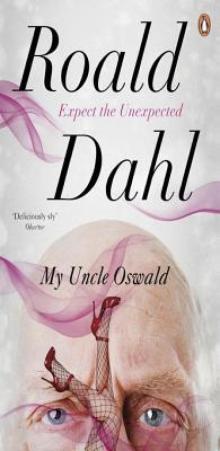 My Uncle Oswald
My Uncle Oswald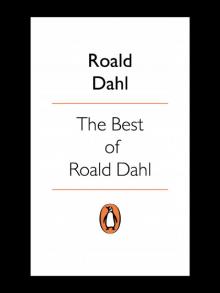 The Best of Roald Dahl
The Best of Roald Dahl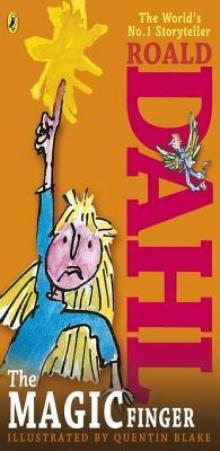 The Magic Finger
The Magic Finger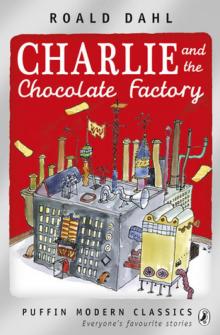 Charlie and the Chocolate Factory
Charlie and the Chocolate Factory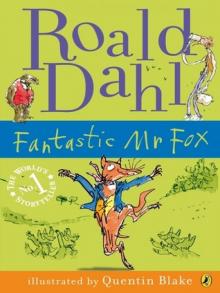 Fantastic Mr Fox
Fantastic Mr Fox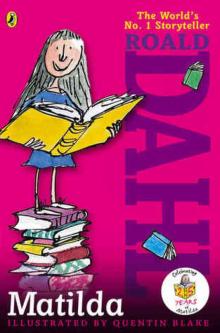 Matilda
Matilda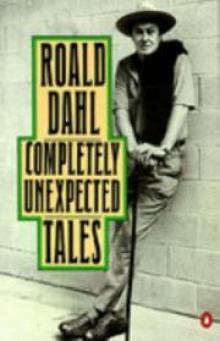 Completely Unexpected Tales: Tales of the Unexpected. More Tales of the Unexpected
Completely Unexpected Tales: Tales of the Unexpected. More Tales of the Unexpected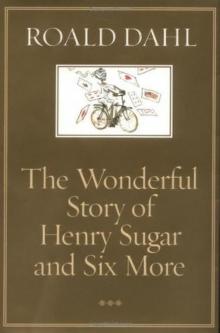 The Wonderful Story of Henry Sugar and Six More
The Wonderful Story of Henry Sugar and Six More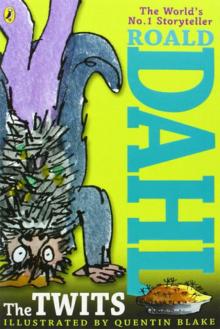 The Twits
The Twits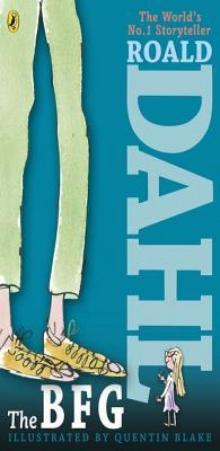 The BFG
The BFG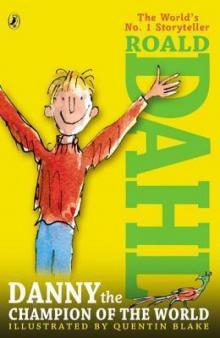 Danny the Champion of the World
Danny the Champion of the World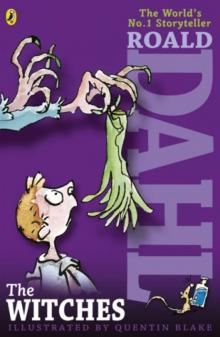 The Witches
The Witches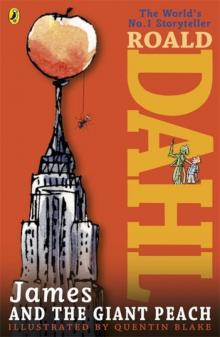 James and the Giant Peach
James and the Giant Peach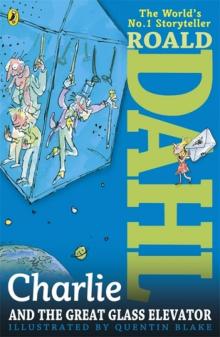 Charlie and the Great Glass Elevator
Charlie and the Great Glass Elevator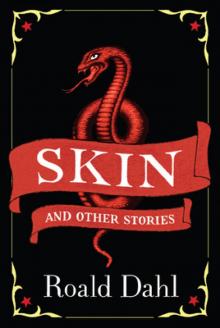 Skin and Other Stories
Skin and Other Stories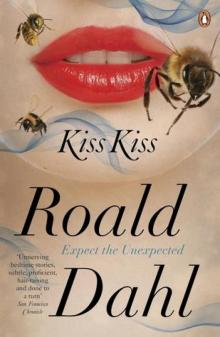 Kiss Kiss
Kiss Kiss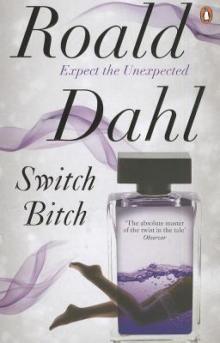 Switch Bitch
Switch Bitch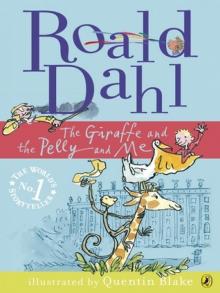 The Giraffe and the Pelly and Me
The Giraffe and the Pelly and Me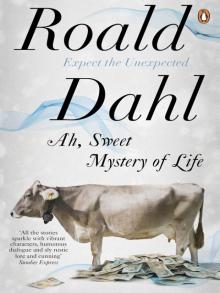 Ah, Sweet Mystery of Life
Ah, Sweet Mystery of Life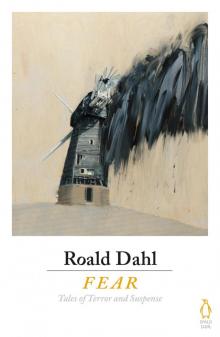 Fear
Fear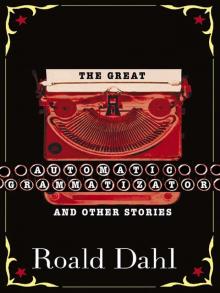 The Great Automatic Grammatizator and Other Stories
The Great Automatic Grammatizator and Other Stories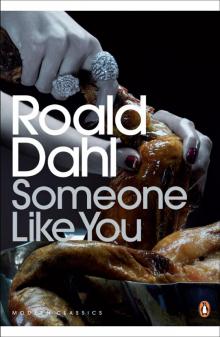 Someone Like You
Someone Like You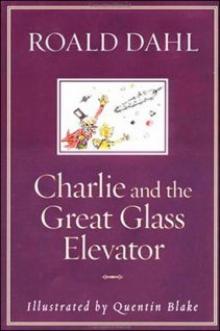 Charlie and the Great Glass Elevator c-2
Charlie and the Great Glass Elevator c-2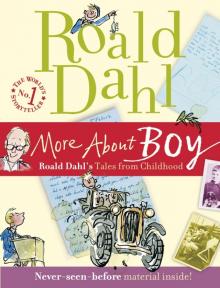 More About Boy
More About Boy Tales of the Unexpected
Tales of the Unexpected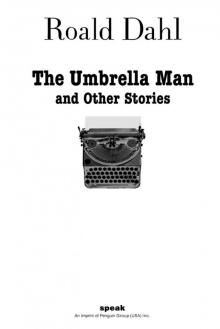 The Umbrella Man and Other Stories
The Umbrella Man and Other Stories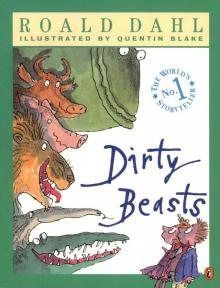 Dirty Beasts
Dirty Beasts Roald Dahl's Mischief and Mayhem
Roald Dahl's Mischief and Mayhem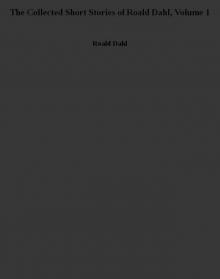 The Collected Short Stories of Roald Dahl, Volume 1
The Collected Short Stories of Roald Dahl, Volume 1 The Missing Golden Ticket and Other Splendiferous Secrets
The Missing Golden Ticket and Other Splendiferous Secrets Billy and the Minpins
Billy and the Minpins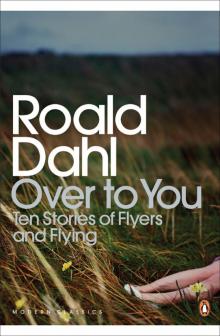 Over to You
Over to You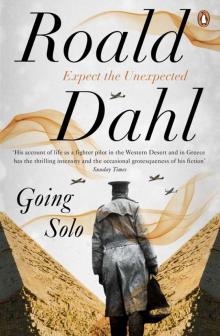 Going Solo
Going Solo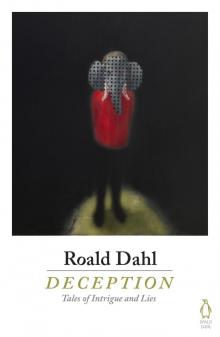 Deception
Deception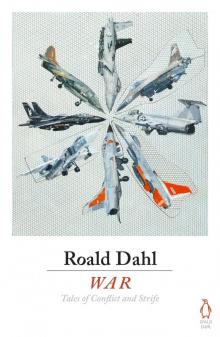 War
War Man from the South ee-3
Man from the South ee-3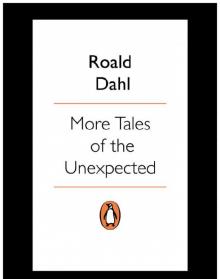 More Tales of the Unexpected
More Tales of the Unexpected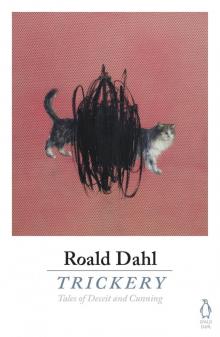 Trickery
Trickery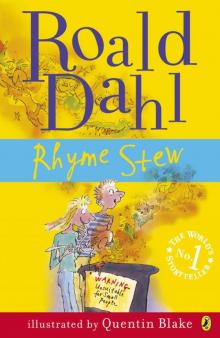 Rhyme Stew
Rhyme Stew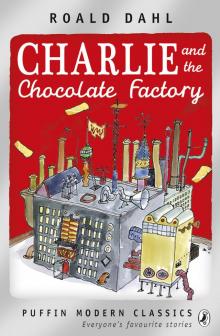 Charlie and the Chocolate Factory (Puffin Modern Classics relaunch)
Charlie and the Chocolate Factory (Puffin Modern Classics relaunch)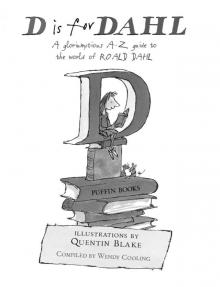 D is for Dahl
D is for Dahl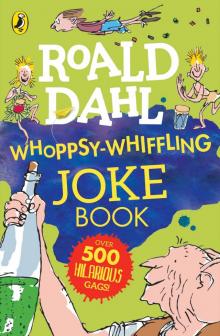 Roald Dahl Whoppsy-Whiffling Joke Book
Roald Dahl Whoppsy-Whiffling Joke Book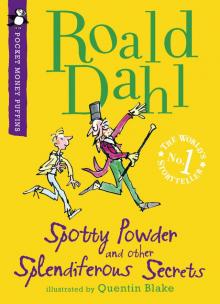 Spotty Powder and other Splendiferous Secrets
Spotty Powder and other Splendiferous Secrets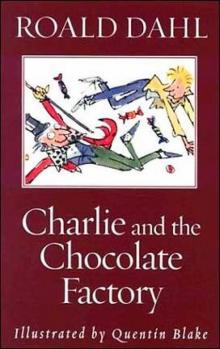 Charlie and the Chocolate Factory c-1
Charlie and the Chocolate Factory c-1 Boy
Boy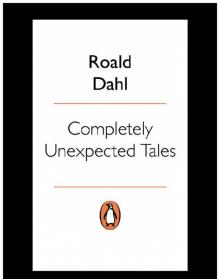 Completely Unexpected Tales
Completely Unexpected Tales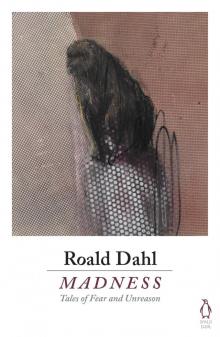 Madness
Madness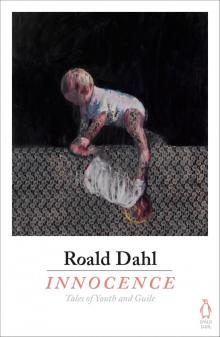 Innocence
Innocence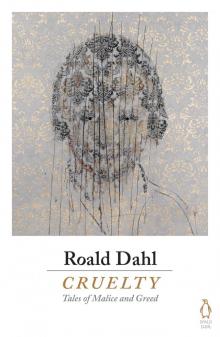 Cruelty
Cruelty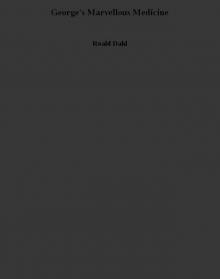 George's Marvellous Medicine
George's Marvellous Medicine